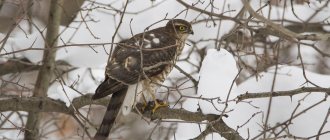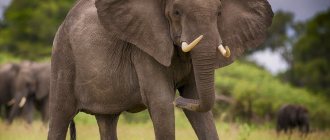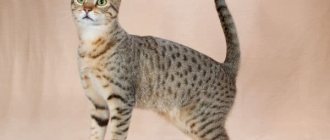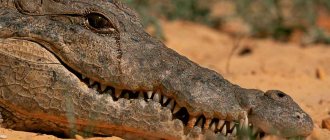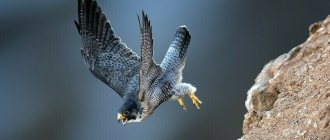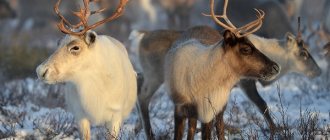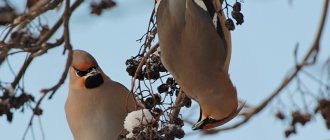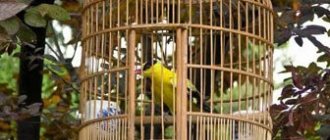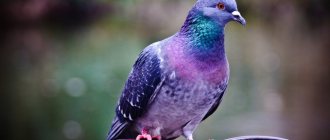The Ural Mountains form a natural border between Europe and Asia, the Western Palearctic. This peripheral location preserves an enviable list of breeding and migratory bird species that are difficult—sometimes impossible—to see elsewhere in the world. The Urals are fertile for nesting in all seasons. Along this impressive mountain range the range includes:
- gloomy tundra;
- pristine taiga forest;
- beautiful coastal forests;
- wet swamps;
- further south there are open plains, steppes and even semi-deserts.
The rich environment accommodates many species of birds, they find abundant food here in untouched places, favorable conditions in cities and towns.
Nightjar
The common nightjar is a nocturnal bird that can be found in temperate latitudes of Eurasia and Africa. The greyish-brown, discreet plumage helps this small bird (the nightjar's weight is up to 100 grams) with a very unique voice to survive among the nocturnal inhabitants.
Crossbill
A bird from the order Passeriformes, the crossbill is quite common in the forests of the Northern Hemisphere. Slightly larger than a sparrow in size, the crossbill feeds on seeds of pine trees, for which it is equipped with a peculiar cross-shaped beak, which is its calling card.
Lesser nightjar
The Lesser Nightjar is a small nocturnal bird of prey whose diet consists mainly of insects. Breeds on the North American continent, and prefers low-lying areas. The ragged, uneven flight of the bird and steep dives are the specialty of this little hunter.
Owl Nightjar
Externally resembling a small owl (weighing up to 100 grams), this nightjar, also called a frogmouth, this nightjar is very rarely found with people - living in the mountainous regions of Australia and New Zealand. Leads a nocturnal lifestyle.
Whitethroat
A tiny bird, the warbler lives in bushes and undergrowth - and has a wide range of habitats throughout Europe. It feeds on both animal food (insects and mollusks) and berries. Agile and very nimble, in appearance it resembles an ordinary gray warbler.
Forest Pipit
The wood pipit from the wagtail family is a small bird of inconspicuous variegated color that lives in Europe and Asia. It resembles a sparrow in structure, but is smaller and more mobile. It prefers to eat insects, but will not pass by plant foods.
Steppe harrier
This relatively small, graceful bird of prey prefers the open plains and marshlands of Eastern Europe to live, migrating to India and East Asia for the winter. Feeds on small animals. It nests mainly in pairs.
skylark
The song of this small bird with a dim, inconspicuous color cannot be confused with any other - the melodic ringing trills of male larks can truly captivate the listener. Meadows, fields, steppes and mountains are the usual habitat of this vocal singer.
Short-eared owl
A small bird of prey (weighing up to 500 grams), which can be found almost everywhere along the outskirts of swamps. It prefers a migratory lifestyle, being a typical inhabitant of open areas - meadows and lowlands and nests only on the ground.
great egret
A very large heron with a large wingspan, this bird is common in temperate and tropical latitudes of many continents - from Europe to Asia, America, and even Africa. This predator hunts during the day, but prefers to seek shelter at night. It is distinguished by its majesty and smooth flight.
Dipper
The water sparrow, or dipper, is similar in size to a starling - and has interesting plumage, on which a white apron stands out. The bird lives mainly along the banks of fast-flowing reservoirs and rivers with clean water - it feeds on small insects and fish, being able to swim well.
Cormorant
A massive and fairly large bird (its weight can reach up to 3 kilograms), the great cormorant boasts a black color interspersed with bright white spots. He has a low voice and doesn't like to make much noise. It lives on almost all continents except the northern ones.
Peganka (Atayka)
A large waterfowl, the shelduck, is distinguished by its variegated plumage (white, red, black and gray shades). The shelduck belongs to the duck family, being an intermediate link between ducks and geese. Quite a vocal bird.
mute swan
Probably everyone knows this snow-white, large beauty - the swan is distributed on almost all continents. Inhabits water spaces overgrown with vegetation, feeding on aquatic plants and animal food. Now it is considered a rare species.
Hoodie
A medium-sized bird (usually about 500 grams), the hooded crow is a common inhabitant of cities, striking in its numbers. It is an omnivorous bird, consuming both animal and plant foods. It is highly tamed and has high intelligence.
Crow
A jet-black bird with large dimensions, the raven is the largest member of the family and can reach a weight of up to two kilograms. Moreover, this bird is one of the few that is capable of performing maneuvers in flight that resemble aerobatics.
Black Crow
A species described several centuries ago – and has retained its name to this day. The bird nests in Europe and Asia, leads a predominantly gregarious lifestyle and is distinguished by a guttural, hoarse voice. They are omnivorous - and are capable of attacking even eagles (in flocks, of course).
Rook
A large black bird with a purple tint and a large light beak (this is what distinguishes it from the black crow), the rook is common in Eurasia. It is an almost omnivorous bird, but prefers insect larvae. Has high intelligence, similar to that of chimpanzees.
Magpie
Distributed throughout Europe and Asia, Africa and other continents, the magpie has a very specific color. Its characteristic plumage in black and white colors catches the eye everywhere - this bird cannot be confused with any other. And its undulating flight and jumps give the magpie a special charm.
Common Pigeon
A bird known to many, the pigeon can easily be found on all continents and in all countries. In the wild, it prefers rocks, bushes and steep banks of water bodies. It has a variety of variable colors, but in the wild it is still distinguished by its characteristic gray plumage.
Wood Pigeon
Jackdaw
Field Thrush
Features of the fauna and climate of the Urals
The climatic conditions of the Urals directly affect the birds living here. Most of the territory is occupied by the Ural mountain system, so a unique natural and climatic zone has formed here.
The relief is represented by long mountain ranges. The mountains stretch from the Arctic Ocean in the north to Kazakhstan in the south. The ridges are distinguished by their low height of about 1.6 km.
Ural Mountains on the map
Numerous rivers flow between them. In general, the climate is typically mountainous and varies with latitude. In the northern part it is subarctic, in the eastern part it is continental, in the middle zone it is moderate, and to the west the continentality gradually decreases.
Thus, the territory of the region is located simultaneously in several natural zones (all except the desert):
- the polar part - in the tundra, forest-tundra;
- the northern part is in the forest-tundra, taiga;
- the middle part is in the taiga, forest-steppe;
- the southern part is in the steppe, forest-steppe.
Thanks to such a wide variety of natural conditions, in different regions of the Urals you can find all kinds of bird species that have adapted to these conditions. The most successful classification of birds of the Urals is by habitat:
- forest;
- steppe;
- waterfowl;
- coastal birds.
It is also worth considering separately the species that are listed in the Red Book.
Cormorants
There are about 40 species of cormorants. All of them are shore birds, staying near the seas and oceans. Cormorants have long necks and beaks. The latter is pointed and slightly curved at the end. The feathered families are large, 50-100 centimeters in length. Here are some examples:
1. Bering cormorant. From the name it is clear that the bird is eastern. The plumage of the Bering cormorant is black, violet on the neck, and metallic on the rest of the body.
2. Small. This cormorant has a reddish neck against a black plumage with a metallic green sheen. You can see birds in the deltas of the Dnieper, Danube, and Dniester.
3. The red-faced cormorant is not related to the Indians. The bird's eyes have bare skin that is red-orange in color. Waterfowl are often named according to their external characteristics.
Most cormorants are protected. Some species are included not in the Red Book, but in the Black Book, that is, they are extinct. An example is the Steller's cormorant. He lived on the Commander Islands, did not fly and was distinguished by a white mark on his thigh.
Forest birds
The Urals are home to a wide variety of forest birds. There are both large and smaller species. Each of them adapted to the local conditions in its own way. But all are united by a certain way of adapting to food production.
Forests of the Urals
For example, some species have massive legs, others have a powerful beak. Slightly rounded wings, designed not for covering long distances, but for maneuvering between trees, are also characteristic of forest birds.
forest pipit
Forest Pipit
A small bird, even smaller in size than a sparrow. Body up to 16 cm in length. Weighs up to 26 g. Color is multi-colored: black, brown, ocher, white. Makes sounds like "tit-tit". The horse moves quickly along the surface of the earth. Migrant. It makes nests on the ground, in the grass. Prefers to live in pairs. It feeds on insects and seeds.
Nightjar
Nightjar The
nightjar has a graceful physique.
The average length is about 26 cm. Birds fly quite quickly and energetically, without making any sounds. Thanks to its interesting color, the bird can easily camouflage itself and hide from predators. Moves little on his feet. The main diet consists of insects. Interesting fact : you can distinguish a female and a male nightjar by the color of the feathers on the sides of the throat. In males they are white, and in females they are red.
Whitethroat
A slender, agile small bird. The maximum weight is 14 g, and the body length is 12.5 cm. It is not easy to see the Accentor, as it prefers to hide. But it can be heard thanks to a ringing chirp or a long trill. Found in parks, squares, plantings, and sparse forests. Warblers nest in pairs. Omnivorous species - feeds on both insects and berries and fruits.
Whitethroat
Capercaillie
A large bird from the grouse subfamily. Male wood grouse weigh about 6 kg and measure up to 1.1 m. Females are much smaller and strikingly different from males in appearance. They prefer coniferous and mixed forests. They feed mainly on plants, and the chicks eat animal food.
Capercaillie
During the breeding season, males make special sounds - talk, and also perform “mating dances”. Wood grouse songs can only be partially heard because they contain infrasonic frequencies.
Interesting fact : during the mating season, male wood grouse experience such a strong surge of hormones that they lose their vigilance. They completely forget about the surrounding danger, they are “stunned.” Because of this, the birds got their name.
Grouse
The black grouse has a large body, a short beak and a small head. Sexual dimorphism is pronounced. Males are much larger - they grow up to 58 cm in length and weigh about 1-1.5 kg. Males are shiny black with an interesting tint in the neck area. Females are similar to capercaillie females - motley, brownish.
Grouse
The black grouse spends most of its time on the ground. Its habits are similar to that of a domestic chicken. Lives as part of a group. He hears extraneous noises well, so he manages to hide from danger. Eats mainly plant foods.
Zhelna
Zhelna
The same black woodpecker, the largest representative of the family. It is distinguished by a slender body, medium size, long neck and tail. A characteristic feature of the yellowtail is its solid black color with a bright red “cap” on its head. The female can be distinguished by the brownish tint of her feathers and a small spot on the back of her head. Woodpeckers feed on insects that live in wood.
Spine-tailed Swift
The keytail swift is a fairly large species, the distinctive feature of which is the absence of a notch on the tail. The color is dark with white areas on the throat, under the tail and on the forehead. Long, sickle-shaped wings. Swifts settle in forests, near bodies of water.
Spine-tailed Swift
Oriole
Oriole
A bright small bird. Known for active, noisy behavior. It lives high among the trees, so it is difficult to see. Prefers a solitary lifestyle, but sometimes orioles create pairs. The basis of the diet is insects and berries. It travels long distances to winter, populating tropical forests in Africa and Asia at this time.
Interesting: Animals - species, list, names, description, where they live, photos and videos
Song thrush
A small bird with a motley color. It grows up to 25 cm in length and weighs no more than 100 g. Females and males are characterized by the same appearance. Only young chicks are distinguished by a more variegated, dull color of feathers. Eats invertebrates, fruits, berries. Blackbirds live in all types of forests.
Song thrush
Hoopoe
A bright small bird with an unusual appearance. The hoopoe has orange plumage on the upper part of the body, black and white wings and the same tail. It also has a long sharp beak, and on its head there is a high crest, which the hoopoe sometimes spreads in the form of a fan.
Hoopoe
Body length is up to 29 cm. The bird is difficult to confuse with other species. Males and females are no different. Hoopoes like open spaces - meadows, hills, valleys. The bird's habitat is very large, but it is the hoopoes of the Urals that migrate south in winter. Feeds on animal food.
Interesting fact : the hoopoe attracts attention with its bright appearance. Therefore, mentions of it are found even in ancient scriptures. For many peoples, it was a sacred bird; it was mentioned in legends, myths, and poetry.
White Owl
In the tundra zone it is the largest representative of owls. A large beautiful bird with white plumage and dark transverse spots. Females are larger than males - up to 70 cm in length, weighing about 3 kg. The chicks are born brown.
White Owl
The polar owl can be found in open areas. It feeds mainly on animals: rodents, hares, birds. Sometimes he eats fish. Owls fly out to hunt early in the morning or late in the evening, moving a considerable distance from the nests.
Common eagle owl
A large predator with a massive build, motley plumage, and long feathered ears. Slightly larger than a polar owl. Females are also larger than males - they weigh about 3 kg and reach 75 cm in length. Otherwise, sexual dimorphism is poorly developed.
Common eagle owl
The eagle owl's plumage is loose. The predominant shades are brown, black, and ocher. It is difficult for ornithologists to determine the purpose of the sounds that eagle owls make, since their “repertoire” is quite extensive. The bird hunts at night for other birds, mammals and other animals.
Tawny Owl
A medium-sized predator - about 0.5 kg in weight and up to 38 cm in length. This species does not have elongated tufts of feathers on its head. The color of the tawny owl can vary slightly from gray to brown. If a pair of birds have different plumage, then their young may have different appearances. Diet: small birds and animals.
Interesting fact : the gray owl's head rotates 270 degrees.
Tawny Owl
Peregrine falcon
The body is up to 0.5 m in length, the weight of females is about 1-1.5 kg. Males are smaller and lighter. Otherwise, it is difficult to distinguish a female from a male. Like other falcons, peregrine falcons have a massive chest, large fingers and claws, and a small curved beak.
Peregrine falcon
The peregrine falcon is an exclusively bird of prey that feeds on a variety of mammals, smaller birds and other animals. Most active in the morning and evening. Most often it hunts on the fly.
Merlin
A large representative of the falcon family. Body length – up to 60 cm, weight – about 2 kg. Like other predators, females are larger than males. In many ways, the gyrfalcon is similar to the peregrine falcon, with the exception of color and tail length. It feeds on medium-sized birds. Every day the gyrfalcon requires approximately 200 g of food.
Interesting fact : people have long used gyrfalcons for hunting purposes. Nowadays, they are grown specially in nurseries for this purpose. In our country, this is done in the Galichya Mountain Nature Reserve.
Merlin
Saker Falcon
The falcon is quite large in size - about 60 cm and weighs 1 kg. The most common color option is brown with brown, gold, and ocher. The beak is bluish in color. Saker falcons very rarely build nests, preferring to build others' nests.
Saker Falcon
The falcon's diet depends on the natural area. As a rule, a predator waits for its prey, hiding at a significant height. Then the saker falcon falls sharply down and hits the target with its claws.
Other Anseriformes
In addition to the familiar species, the Anseriformes include those that are little known and exotic to the average person. This:
- Palamedea horned, having a 10-centimeter process on the head, black and white plumage and found in Brazil
- barnacle goose, found on Novaya Zemlya and Greenland, distinguished by white-gray plumage and snow-white cheeks with black edging
Anseriformes inhabit the entire earth except Antarctica. Outside of it, most representatives of the detachment are sedentary. Only birds that nest in areas with cold climates roam.
Steppe birds
This category includes not only directly steppe species, but also those that live in meadows and valleys. Therefore, they are also called birds of open spaces. Many of them spend most of their time on the ground, blending in with the grasses thanks to their camouflage color. They need strong legs.
Ural steppes
However, there are no less species that cover significant spaces. They usually have strong wings and a not too heavy body. Steppe birds can be either herbivores, predators or omnivores.
In addition to the variety of meadow vegetation, seeds and other “vegetarian” food, in these places there are a lot of rodents, amphibians, and invertebrate animals.
Field lark
Field lark
The color of the lark is not bright, but attracts attention. The variegated shades of plumage allow the bird to carefully camouflage itself among the steppe vegetation. Only males sing. The favorite foods for larks are seeds and various grains. In the summer season they feed on insects.
Grouse
Among the grouse, the hazel grouse is considered the smallest - the weight of individuals is usually up to 500 g. The characteristic color distinguishes the bird from other members of the family. Males and females are almost indistinguishable. Hazel grouse prefer a sedentary lifestyle. They eat mainly plant foods, sometimes insects.
Interesting: Rook
